Real Accessibility
Built by the People Who Live It
Unlock 12% more of your market with no overlays, no shortcuts. Just real, lasting accessibility tested by people with experience using adaptive technology.

Reviewed by certified accessibility experts
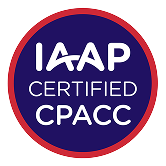
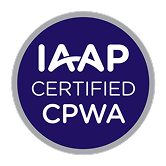
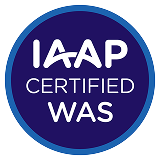
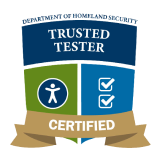
Join the companies building a more accessible, inclusive web
Trusted by leading businesses who prioritize accessibility
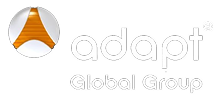













The Accessibility Opportunity
While some businesses only focus on compliance, smart companies see the growth opportunity
Don't let inaccessibility cost you customers
Start Capturing This MarketWhat Makes Us Different
While some businesses only focus on compliance, smart companies see the growth opportunity. Many companies claim to provide accessibility solutions, but automated tools and testers who just follow WCAG standards get it wrong most of the time.
The ARIA Problem: Pages using ARIA (Accessible Rich Internet Applications) averaged 34.2% more errors than pages without ARIA. ARIA, designed to enhance accessibility for complex interactive elements, actually makes things worse when misused—which appears to be most of the time. The number of ARIA attributes per page has quadrupled since 2019, suggesting developers are trying to fix accessibility but lack the expertise to do it correctly.
Real Testing by Real People
Our team includes people with lived experience dealing with accessibility issues who use adaptive technology daily, ensuring authentic accessibility testing
Truly Compliant Solutions
From ADA/Section 508 to WCAG 2.2 AAA - we deliver genuine compliance through proper code implementation, not automated overlays that mask problems
Lasting Accessibility
Unlike competitors who offer quick fixes, we build accessibility into your foundation for long-term compliance
Complete Accessibility Solutions
From initial audits to full implementation - we provide everything you need to create an accessible, compliant website that welcomes all users
Complete Audit + Full Implementation
We audit your site AND fix all issues for you - our most comprehensive solution
Complete Audit & Implementation Guide
Perfect for teams with dev resources who can implement fixes
Not sure which service is right for you?
Book a free consultation and we'll create a custom accessibility roadmap tailored to your website's specific needs and business goals.
Our Proven Process
From consultation to ongoing support, we guide you through every step of creating an accessible, compliant website
Free Consultation
We discuss your needs, timeline, and goals to create a custom accessibility roadmap
Choose Your Service
Select between a comprehensive audit or full remediation. Choose remediation to skip the audit and jump straight into fixes
Testing & Discovery
Our human testers with lived experience evaluate your site using real assistive technologies
Implementation & Fixes
We implement accessibility improvements directly in your codebase, ensuring every issue is properly resolved. Implementation can be handled by your team or our team
Team Training
We educate your team on maintaining accessibility standards going forward
Final Audit & Support
Every project is reviewed by an actual screen reader user to verify compliance. We issue a certificate of compliance and offer optional ongoing monitoring to ensure continued accessibility
Ready to get started?
Every journey begins with a conversation. Let's discuss your accessibility needs and create a plan that works for your business.
Book Your Free ConsultationWhat Our Clients Say
Real results from real businesses who chose authentic accessibility solutions
"Robert was excellent to work with. Knowledgeable. Capable. Did the right job, the right way. SO good he's basically a productized solution. If you need your site accessibility compliant, simply work with Robert and it will be done. You no longer have to think/worry about this problem."
"Robert is very knowledgeable and efficient in his craft. We will be using his services again for any ADA assistance. Thanks Robert!"
"Robert was excellent to work with—knowledgeable, efficient, and easy to communicate with. He completed the VPAT quickly and provided clear, helpful guidance throughout the process. Highly recommended."
"Robert is a complete all-star consultant who gives his all to his clients! He went above and beyond auditing our site and helping implement the corrections. We will be using him again and again for future projects!"
"Robert was amazing to work with. He knows his stuff and provided detailed recommendations to get our systems right. Will definitely work with him again in the future. I highly recommend!"
"Robert and Matt helped us with several accessibility projects--from making a textbook PDF accessible and completing a VPAT form to consulting with our designer to give her tips to make our books' PDFs accessible to working with our IT person to help make our website accessible. I appreciated them very much!"
"Robert was great—very professional, transparent, and super helpful! Even when we had some last-minute changes on our end, he pivoted smoothly and nailed everything. Highly recommend!"
"Robert's expertise in web accessibility has been a tremendous asset. He possesses a deep understanding of WCAG and ADA guidelines and has helped with PDFs and website adjustments. This wasn't just about checking boxes; Robert took the time to explain any questions I may have had regarding why certain practices were needed or how best to resolve an issue. His patience, professionalism, and willingness to answer my (many!) questions were invaluable. Out of 5 stars he deserves 11! I highly recommend Robert to anyone seeking to make their digital content accessible."
"Robert is the absolute best! He is the real deal when it comes to accessibility testing and remediation. He is helpful, responsive, and an all-around great human to work with!"
"Exactly what I needed. Quick turnaround - thank you!"
"Really enjoyed working with Robert - he was thorough and fast, with great communication. We look forward to working with him again in the future the next time we need help!"
"Robert was excellent, he was able to complete our task quickly and helped us sort out a load off accessibility issues our course had. His attention to detail was exactly what we needed. Added bonus as his ability to work with my developer, plus his flexibility working with the UK time zone. Highly recommended for WCAG 2.2 testing and VPAT compiling. We will definitely work with Robert again."
"Robert was fast and knowledgeable on the subject of accessibility. He taught and showed me a lot that will be useful for our platform. Absolutely recommend!"
"Robert was phenomenal to work with on my ADA compliance. I actually first selected a different freelancer - but it turns out this other freelancer likely did minimal work and just turned in a Google Lighthouse audit to me. Since I myself have limited knowledge, I employed Robert's services to audit the other person's work. Lo and behold, the other person backed out. Robert stepped up to make the needed changes and improve the accessibility. Robert is timely and excellent in communication and his own visual impairment is valuable for gaining perspective for this group. He worked diligently and was honest when there were much more technical issues that couldn't be resolved. I would absolutely work with Robert again, and would recommend him to others."
Get Your Accessibility Quote
Enter your website address below for an instant estimate. Our team will review and provide a detailed human-powered proposal within 24 hours.
Need to discuss your project first? Schedule a free consultation
Ready to unlock your website's full potential?
Join 100+ businesses who've discovered that accessibility isn't just about compliance - it's about growth, inclusion, and creating better experiences for everyone.




Certified Accessibility Experts